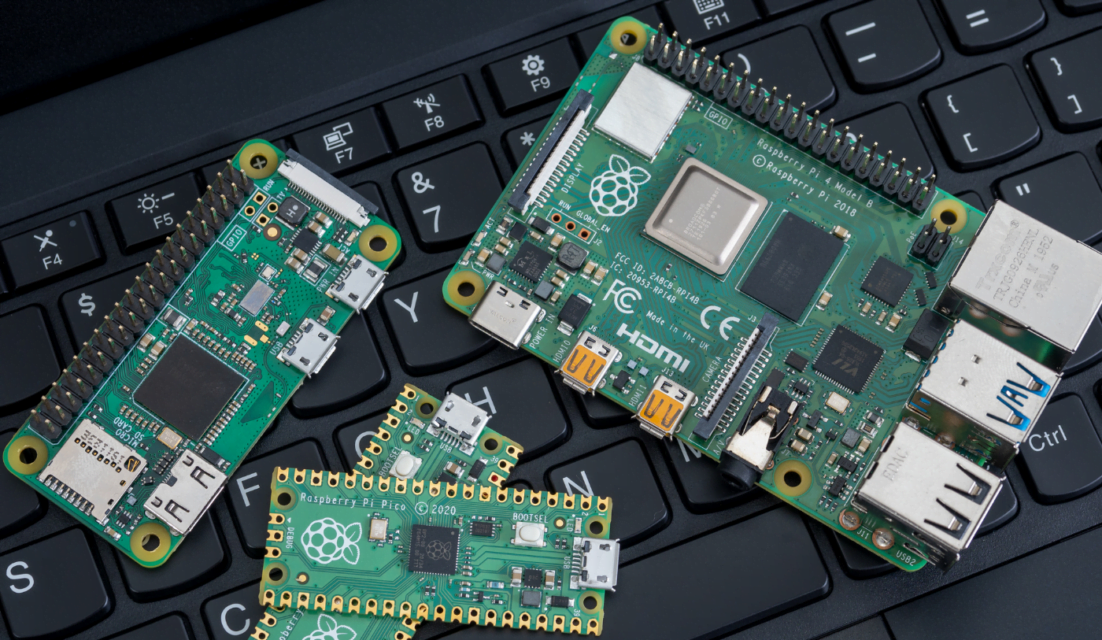With the continuing advancements in Internet of Things (IoT) and automation technology, our way of life and day-to-day activities seem much more convenient than some ten years ago. The IoT and AI enable us to automate tedious household tasks, experiment with new ideas, and cut down a considerable amount of investment cost for companies, which prefer Industrial IoT to maximize workforce efficiency. If you’re about to start your next IoT project or still confused about choosing the right hardware for your IoT project, well, this article is for you. Let’s compare some of the important factors and difference between Arduino and Raspberry Pi hardware to determine which is right and most beneficial for your IoT projects.

Raspberry Pi vs. Arduino: Hardware Differences
Choosing the best hardware between Arduino or Raspberry Pi is much easier when you understand that Raspberry Pi is a fully functional computer. Some refer to Raspberry Pi as Modern Microcomputers (a microprocessor that acts as a computer), while Arduino is a microcontroller, basically a component of a computer. Well, the below differences might help you have a much clearer understanding of how these two hardware are different from each other.

CPU
- Powered by ATmega CPUs, Arduino has a maximum CPU speed of 480MHz, but most Arduino boards used for IoT projects are equipped with 16MHz or 48MHz clock speed. Now, speaking of the other hardware, Raspberry Pi 4 is roughly 40 times faster than any Arduino variants, offering you an absolute advantage to run, execute and manage some of the most demanding activities involved in your IoT projects.
- Furthermore, due to its ability to do simple and less-complicated tasks, Arduino boards are operated on an 8-bit AVR instead of Raspberry Pi, which has more CPU variants, ranging from 32-bit to 64-bit quad-core processors.
- Additionally, it is critical to note that you don’t need an OS to operate or work on Arduino microcontrollers, as they just require a binary of the compiled source code instead of an operating system.
RAM
- As Raspberry Pi microprocessors are specifically designed and built to enable the end-users to feel an alternative for the regular desktops, they consume more ram compared to Arduino, which are primarily intended for less-complicated tasks.
- With less than 32KB RAM, Arduino microcontrollers are designed to deal with limited tasks and usages, focusing primarily on students who usually prefer to go with a doable budget.
- With the latest Raspberry Pi model, you can do your IoT projects or computing tasks in an efficient and seamless way, as they come with 8 GB RAM for complicated tasks.
Pin Count
- If you are someone who already has some knowledge of how Arduino or Raspberry Pi work, you might be familiar with the term Pin Count or GPIO, a standard interface used to connect microcontrollers to other electronic devices that are crucial for your IoT projects. Sensors, diodes, displays, and System-on-Chip modules are some of the most used equipment when you work on an IoT project.
- With the help of GPIO or Pin Count, you’ll be seamlessly able to connect as many devices to your board. In short, with more pin counts, a wide range of project-related devices can be connected.
- Arduino has only 14 GPIO pins, whereas most Raspberry Pi models have 40 GPIO, enabling you to give more power to your project. If your projects require more sensors and modules, you now know which will be the right fit for your next project.
Power Consumption
- In general, Raspberry Pi and Arduino are low-power devices, meaning it would not result in higher electricity consumption. It is essential to remember that more complicated and constant usage may result in higher power consumption in your IoT projects.
- Raspberry Pi models can use over 700mA when idle.
- Arduino consumes around 50mA when idle.
Speed
- As Raspberry Pis are available in various models powered by ARM CPU, the performance of the devices is several times faster than Arduino models.
- Given the RAM and CPU specs of these two hardware, Raspberry Pi models are undoubtedly faster and more reliable when handling intricate tasks involved in your IoT projects.
Raspberry Pi vs. Arduino: Programming
Of all the aspects involved in comparing these two powerful hardware, programming is the most interesting and critical. It is so simple to choose the best hardware for your IoT project if the operating system and programming language are the most important factors of your whole project. Surprisingly, Arduino microcontrollers don’t require an operating system and only run C and C++ programming languages. Given that Arduino IDE is merely a set of C/C++ functions compiled and flashed to a board, the programming options are suited for beginners. Raspberry Pis are the best choice for advanced projects requiring multiple programming languages, especially when running Linux.
Raspberry Pi vs. Arduino: Field of Use
Combining Arduino or Raspberry Pi devices with IoT, you can experiment with a wide range of creative, inventive concepts for your college or school science exhibitions without spending too much of your money. Raspberry Pi and Arduino give you the perfect environment for you to unleash your creativity and quench your thirst for knowledge with your desired results.

Let us learn about the applications of Arduino or Raspberry Pi for beginners. It is essential to note that both have a different usability depending upon the project you do. For example, simple and less-complicated projects for your school/college experiments can be effortlessly tried and experimented with Arduino, such as a small energy monitor for your home appliances, an automatic notification alert to remind you when to feed your pet or check your stove if you were to cook and work/study at the same time. In fact, you can use Arduino or Raspberry Pi for home automation.
If you want to try and experiment with more complicated Internet of Things projects, well, Raspberry Pi is going to be indispensable for your experiments. The more Pin Counts, the better the connectivity. Remember when we discussed the number of pin counts Raspberry Pi equipped with? Well, that’s one of the outstanding features you’re going to need if your IoT projects require multiple sensors and displays. For example, with the latest Raspberry Pi Model, you can work on experimental industrial IoT projects related to smart automotives, an IoT-based smart home idea, water-monitoring or soil-monitoring agriculture projects, or fertilizer intimation systems and more. The real-world applications are immense, and can benefit people in rural areas. When it comes to using Raspberry Pi or Arduino for robotics, the former is more expensive.
Other uses include serial communication – Arduino, Raspberry Pi, which essentially allows transfer of data when connecting Arduino to Raspberry Pi.
Which is Better for IoT: Raspberry Pi or Arduino?
You might be wondering, ‘Should I learn Arduino or Raspberry Pi?’ While Raspberry Pi comes with more advanced features and abilities to tackle several complicated tasks you throw at them, the other, Arduino, comes with easy-to-use and setup abilities, making your projects up and running in a couple of days, or probably weeks. It is hard to say which one you SHOULD buy, but it is a lot easier to understand which hardware your projects NEED. Ideally, Arduino projects are used for simple, cost-effective projects with single or repetitive tasks. On the other hand, Raspberry Pi can be used for complex projects involving multiple parameters, sensors, and so on.
Ready to build your IoT product?
As a leading supplier in Raspberry Pi and Arduino hardware, Sixfab can help you choose the right hardware for your Internet of Things projects with its wide range of products—ranging from IoT hardware to Cellular Kits.



